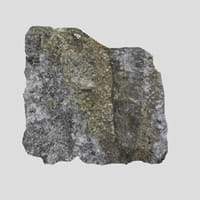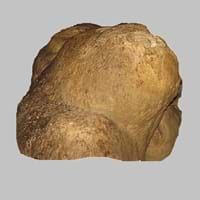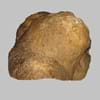Marl and Travertine
Definition
Definition
Marl is an unconsolidated sedimentary rock consisting of clay and lime
Travertine is a mineral consisting of layered calcium carbonate formed by deposition from spring waters
History
Origin
Unknown
Italy
Discoverer
Unknown
Marcus Vitruvius Pollio
Etymology
From Old French marle, from Late Latin marglia
From Italian travertino a kind of building stone, from Tiburs, adjective from Tibur (Tivoli), in Italy
Class
Sedimentary Rocks
Sedimentary Rocks
Sub-Class
Durable Rock, Soft Rock
Durable Rock, Medium Hardness Rock
Family
Group
Not Applicable
Not Applicable
Other Categories
Fine Grained Rock, Opaque Rock
Fine Grained Rock, Opaque Rock
Texture
Texture
Earthy
Banded
Color
Beige, Brown, Green, Grey, White
Beige, Black, Blue, Brown, Grey, Red, White, Yellow
Maintenance
Less
Less
Durability
Durable
Durable
Water Resistant
Yes
Yes
Scratch Resistant
No
Yes
Stain Resistant
No
Yes
Wind Resistant
No
Yes
Acid Resistant
No
Yes
Appearance
Rough and Dull
Fibrous
Uses
Architecture
Interior Uses
Decorative Aggregates, Floor Tiles
Decorative Aggregates, Entryways, Flooring, Homes, Interior Decoration
Exterior Uses
As Building Stone, Roof Tiles
As Building Stone, As Facing Stone, Paving Stone, Garden Decoration, Office Buildings
Other Architectural Uses
Curbing
Curbing
Industry
Construction Industry
Cement Manufacture, Construction Aggregate, for Road Aggregate, Making natural cement, Raw material for the manufacture of mortar
As Dimension Stone, Building houses or walls, Cement Manufacture, Construction Aggregate, for Road Aggregate, Raw material for the manufacture of mortar
Medical Industry
Not Yet Used
Not Yet Used
Antiquity Uses
Artifacts, Jewellery, Sculpture, Small Figurines
Artifacts, Jewellery, Monuments, Sculpture, Small Figurines
Other Uses
Commercial Uses
Creating Artwork, Soil Conditioner
Cemetery Markers, Creating Artwork, Gemstone, Jewelry, Paper Industry, Pottery
Types
Types
Clay Marl ,Blue Marl, Red Marl, High Bank Marl, Shell Layer Marl, Under Shell Layer Marl, Sand Marl, Green Marl, Grey Marl and Clayey Marl
Not Available
Features
Generally rough to touch, Is one of the oldest rock, Splintery, Very fine grained rock
Stalactites and stalagmites are formed from this rock, Surfaces are often shiny, Very fine grained rock
Archaeological Significance
Monuments
Not Yet Used
Used
Famous Monuments
Not Applicable
Colosseum in Rome, Italy, Sacré Coeur in Paris, France, Trevi Fountain in Rome, Italy
Sculpture
Used
Used
Famous Sculptures
Data Not Available
Data Not Available
Pictographs
Used
Used
Petroglyphs
Used
Used
Figurines
Used
Used
Fossils
Present
Present
Formation
Formation
Marl forms when very fine-grained clay particles are deposited in water which settles at the bottom of water bodies and are compacted by overlying sediment; the water squeezes out and hence forming Marl rock.
Travertine is a type of sedimentary rock formed when a river carries or transports pieces of broken rock which then undergo sedimentation. They are then subjected to high temperature and pressure hence forming travertine rock.
Composition
Mineral Content
Calcite, Clay, Dolomite, Gypsum, Micas, Pyrite, Quartz
Calcite, Clay, Feldspar, Micas, Quartz
Compound Content
Aluminium Oxide, NaCl, CaO, Iron(III) Oxide, Silicon Dioxide
Ca, NaCl, CaO, Oxygen
Transformation
Metamorphism
No
No
Types of Metamorphism
Not Applicable
Not Applicable
Weathering
Yes
Yes
Types of Weathering
Biological Weathering, Chemical Weathering
Biological Weathering, Chemical Weathering, Mechanical Weathering
Erosion
Yes
Yes
Types of Erosion
Chemical Erosion, Coastal Erosion, Water Erosion, Wind Erosion
Chemical Erosion, Coastal Erosion, Glacier Erosion
Properties
Physical Properties
Hardness
2-3
3-4
Grain Size
Very fine-grained
Fine Grained
Fracture
Conchoidal
Splintery
Streak
White
White
Porosity
Highly Porous
Highly Porous
Luster
Dull
Dull to Pearly
Compressive Strength
Not Available
80.00 N/mm2
23
Cleavage
Not Available
Non-Existent
Toughness
2.6
1
Specific Gravity
2.2-2.8
1.68
Transparency
Opaque
Opaque
Density
2.4-2.8 g/cm3
2.71 g/cm3
Thermal Properties
Specific Heat Capacity
Not Available
1.09 kJ/Kg K
8
Resistance
Heat Resistant, Impact Resistant
Impact Resistant, Pressure Resistant, Wear Resistant
Reserves
Deposits in Eastern Continents
Asia
India, Pakistan, Russia
China, Russia
Africa
Ethiopia, Kenya, Morocco, South Africa
Not Yet Found
Europe
Austria, France, Germany, Greece, Italy, Romania, Scotland, Spain, Switzerland
Austria, Italy, Portugal, United Kingdom
Others
Not Yet Found
Not Yet Found
Deposits in Western Continents
North America
USA
Canada, USA
South America
Colombia, Ecuador, Peru
Argentina, Bolivia, Ecuador
Deposits in Oceania Continent
Australia
New South Wales, Victoria, Western Australia
Not Yet Found
All about Marl and Travertine Properties
Know all about Marl and Travertine properties here. All properties of rocks are important as they define the type of rock and its application. Marl and Travertine belong to Sedimentary Rocks.Texture of Marl is Earthy whereas that of Travertine is Banded. Marl appears Rough and Dull and Travertine appears Fibrous. The luster of Marl is dull while that of Travertine is dull to pearly. Marl is available in beige, brown, green, grey, white colors whereas Travertine is available in beige, black, blue, brown, grey, red, white, yellow colors. The commercial uses of Marl are creating artwork, soil conditioner and that of Travertine are cemetery markers, creating artwork, gemstone, jewelry, paper industry, pottery.
|
||
|
||
|










